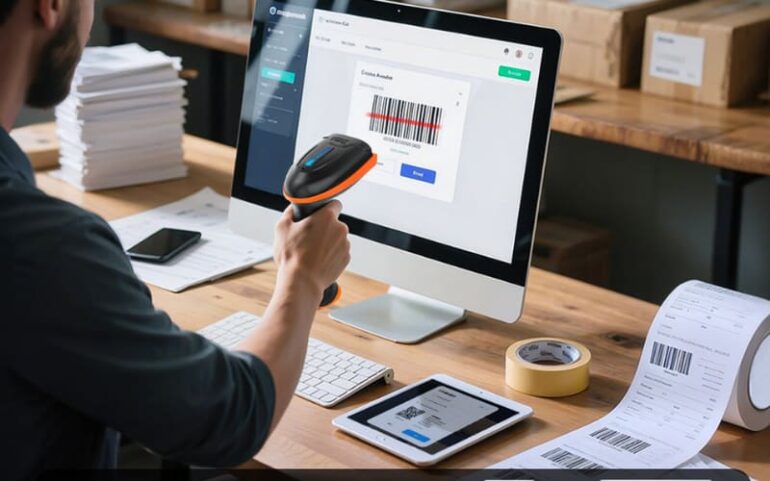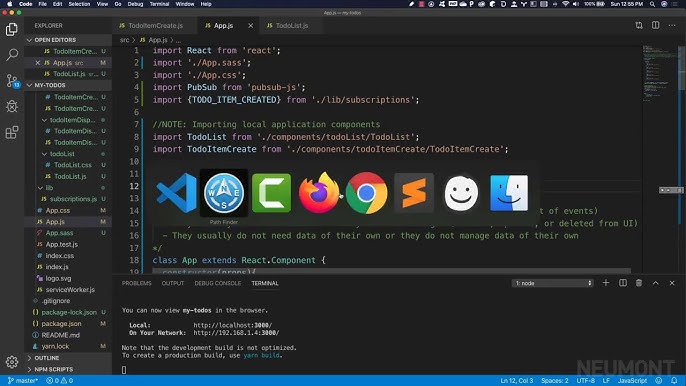Welcome to the modern kitchen of software development, where crafting a flawless application can often feel like perfecting a complex recipe. Sometimes, despite following the instructions, the result isn’t quite right. The flavors are off, the texture is wrong, and you’re left wondering where you made a mistake. This is the world of Software Debugging—a culinary art form for developers. Just as a chef tastes and adjusts a savoy cabbage soup, a developer must inspect and refine their code to transform a buggy program into a robust and reliable application.
This guide is your comprehensive cookbook for mastering the art of debugging. We will move beyond simple `print` statements and delve into a full spectrum of Debugging Techniques applicable across the development stack. Whether you’re wrestling with elusive JavaScript Errors on the client-side or diagnosing complex Node.js Errors on the server, the principles remain the same: observe, hypothesize, test, and repeat. We will explore essential Debug Tools, from the indispensable Chrome DevTools to powerful IDE-integrated debuggers, and discuss language-specific strategies for JavaScript Debugging, Node.js Debugging, and Python Debugging. Prepare to sharpen your skills and learn the recipes for effective Bug Fixing and creating cleaner, more resilient code.
The Mise en Place: Preparing Your Debugging Environment
Before a chef begins cooking, they perform “mise en place”—the process of gathering and arranging all necessary ingredients and tools. In software development, this preparation is equally crucial for effective debugging. A well-prepared environment and a systematic mindset can turn a frustrating bug hunt into a structured and efficient problem-solving session. This foundational step involves understanding the core principles of debugging, equipping yourself with the right tools, and mastering the simplest yet most powerful techniques.
Adopting a Systematic Debugging Mindset
At its core, Code Debugging is a scientific process. Randomly changing code and hoping for the best is like throwing random spices into a soup—it rarely works and often makes things worse. A structured approach is paramount.
- Reproduce the Bug: The first and most critical step. You cannot fix what you cannot consistently trigger. Identify the exact steps, inputs, and environmental conditions that cause the error. This is the cornerstone of all Debugging Best Practices.
- Isolate the Problem: Narrow down the search area. Use techniques like binary searching your code (commenting out halves of the code) or analyzing Stack Traces to pinpoint the specific module, function, or line where the error originates.
- Form a Hypothesis: Based on the evidence from the Error Messages and your observations, form an educated guess about the root cause. What assumption is the code making that is incorrect?
- Test and Verify: Implement a fix based on your hypothesis. But don’t stop there. Verify that the fix not only resolves the original bug but also doesn’t introduce new ones (regressions). This is where the synergy between Testing and Debugging becomes vital.
Stocking Your Pantry: Essential Debug Tools
A chef is only as good as their knives, and a developer is only as effective as their tools. Modern Developer Tools provide incredible insight into your application’s runtime behavior.
- Integrated Development Environments (IDEs): IDEs like Visual Studio Code, PyCharm, or WebStorm come with powerful, integrated debuggers. They allow you to set breakpoints, step through code line-by-line, inspect variable states, and analyze the call stack, offering a comprehensive view of your application’s execution flow.
- Browser DevTools: For any form of Web Debugging, the browser’s built-in tools are indispensable. Chrome DevTools is a prime example, offering a suite for Frontend Debugging, Network Debugging, Memory Debugging, and performance profiling.
- The Debug Console: The humble console is a powerful ally. It’s not just for logging messages; it’s an interactive environment (REPL) where you can execute code, inspect global variables, and test hypotheses in real-time. Mastering the Debug Console is a fundamental skill.
The Power of Strategic Logging
While a full-fledged debugger is powerful, never underestimate the value of good old-fashioned logging. Effective Logging and Debugging go hand-in-hand. Instead of littering your code with `console.log(‘here’)`, use structured logging. Log meaningful information, such as variable values, function entry/exit points, and the state of critical objects. In production environments, structured logs sent to services like Datadog or Logstash are essential for Production Debugging and Error Tracking.
The Main Course: Language-Specific Debugging Recipes
While the principles of debugging are universal, the specific tools and techniques vary depending on the language, framework, and environment. Here, we’ll explore practical recipes for common scenarios in Full Stack Debugging, from the browser to the server and beyond.
Frontend Flavors: JavaScript and Browser Debugging
Frontend Debugging primarily happens in the browser. Mastering Browser Debugging tools is non-negotiable for anyone involved in JavaScript Development.
Using Chrome DevTools for JavaScript Debugging
The “Sources” panel in Chrome DevTools is your command center. Here’s a typical workflow:
- Breakpoints: Instead of `console.log`, add a breakpoint by clicking on a line number. The code execution will pause when it hits this line, allowing you to inspect the entire application state at that exact moment.
- Stepping Through Code: Once paused, you can control the execution flow:
- Step Over: Executes the current line and moves to the next one in the same function.
- Step Into: If the current line is a function call, it moves the debugger inside that function.
- Step Out: Finishes executing the current function and returns to the line where it was called.
- Watch Expressions: You can “watch” specific variables or expressions. The debugger will show you their values, which update automatically as you step through the code.
- Network Panel: For API Debugging on the frontend, the Network panel is crucial. It lets you inspect every HTTP request, including headers, payloads, and response codes, helping you diagnose issues with data fetching.
Modern frameworks have their own debugging ecosystems. For React Debugging, the React DevTools extension is essential for inspecting component hierarchies and state. Similar tools exist for Vue Debugging and Angular Debugging, providing framework-specific insights that are invaluable.
Backend Stews: Node.js and Python Debugging
Backend Debugging presents its own set of challenges, especially with asynchronous operations and complex application logic.
Node.js Debugging
For Node.js Development, the V8 inspector protocol allows you to use familiar tools like Chrome DevTools for your server-side code.
To start a debugging session, run your application with the `–inspect` or `–inspect-brk` flag (the latter pauses execution on the first line):
node --inspect-brk index.jsThis will output a WebSocket URL. Open Chrome, navigate to `chrome://inspect`, and you’ll see your Node.js application listed. Clicking “inspect” opens a dedicated DevTools window where you can use all the familiar features—breakpoints, stepping, console—for your backend code. This is a game-changer for Async Debugging, as it helps visualize the complex flow of callbacks, promises, and async/await.
For frameworks like Express, this allows for effective Express Debugging by placing breakpoints directly within your route handlers and middleware.
Python Debugging
In the world of Python Development, the built-in Python Debugger (`pdb`) is a powerful command-line tool. You can insert a breakpoint anywhere in your code with:
import pdb; pdb.set_trace()When the interpreter hits this line, it will drop you into an interactive `pdb` session in your terminal. You can inspect variables, execute code, and step through the program using commands like `n` (next), `s` (step), and `c` (continue). While `pdb` is powerful, most developers prefer the graphical debuggers integrated into IDEs like PyCharm or VS Code, which provide a more intuitive experience, especially for complex applications like those using Django Debugging or Flask Debugging tools.
Advanced Culinary Arts: Debugging in Complex Environments
As applications grow in complexity, so do the challenges of debugging. Modern architectures involving microservices, containers, and CI/CD pipelines require more advanced strategies.
From a Local Kitchen to a Five-Star Restaurant: Production Debugging
Production Debugging is a delicate operation. You cannot simply pause the application to inspect variables. This is where Error Monitoring and Performance Monitoring tools are critical. Services like Sentry, Bugsnag, or New Relic automatically capture exceptions in production, group them, and provide rich context like Stack Traces, browser/OS versions, and user actions leading up to the crash. This proactive approach to Error Tracking allows you to identify and fix bugs before a large number of users are affected.
A Distributed Feast: Microservices and Container Debugging
In a microservices architecture, a single user request might traverse multiple independent services. Microservices Debugging requires tracing that request across service boundaries. Distributed tracing tools like Jaeger or Zipkin are designed for this, providing visualizations of the entire request lifecycle.
Containers add another layer of abstraction. Docker Debugging often involves:
- Checking container logs with `docker logs <container_id>`.
- Executing a shell inside a running container for live inspection with `docker exec -it <container_id> /bin/sh`.
Similarly, Kubernetes Debugging relies on `kubectl` commands to inspect pod logs, describe resource states, and execute commands within containers, which is essential for diagnosing issues in a clustered environment.
Automated Quality Control: The Role of Testing
The best way to fix a bug is to prevent it in the first place. This is where the symbiotic relationship between Testing and Debugging shines.
- Unit Test Debugging: When a unit test fails, it provides an immediate, isolated environment to debug a small piece of functionality.
- Integration Debugging: Integration tests help catch issues that arise from the interaction between different modules or services.
- CI/CD Debugging: When builds fail in a CI/CD pipeline, the logs and artifacts produced are your primary debugging tools. A failing test in the pipeline is much cheaper to fix than a bug discovered by a user in production.
The Chef’s Secrets: Debugging Best Practices and Final Tips
Becoming a proficient debugger is a journey of continuous learning. Here are some distilled best practices and Debugging Tips to guide you.
- Read the Error Message: This seems obvious, but developers often skim or ignore the error. The Error Messages and Stack Traces are the most valuable clues you have. Read them carefully, from top to bottom.
- Understand the Code: Don’t just debug your code; understand it. Take the time to trace the logic and data flow. Often, the bug is a result of a flawed assumption about how a particular function or library works.
- Use Version Control: Tools like `git bisect` can be debugging superpowers. It automates the process of finding the exact commit that introduced a bug, which is incredibly useful in large codebases.
- Leverage Analysis Tools: Integrate Static Analysis (linters like ESLint) and Dynamic Analysis tools into your workflow. They can catch entire classes of bugs automatically. For performance issues, Profiling Tools are essential for identifying bottlenecks.
- Talk It Out (Rubber Duck Debugging): Explain the problem to a colleague or even an inanimate object (the “rubber duck”). The act of articulating the problem often forces you to look at it from a new perspective and can lead to a breakthrough.
Conclusion: The Perfect Dish
Mastering Software Debugging is not about memorizing every tool or command; it’s about cultivating a methodical, inquisitive, and resilient mindset. Like perfecting a savoy cabbage soup, it requires patience, the right ingredients (tools), and a solid recipe (process). From basic Logging and Debugging to advanced Production Debugging in a microservices environment, the core loop remains the same: reproduce, isolate, hypothesize, and verify.
By embracing the techniques and best practices outlined in this guide, you can transform debugging from a dreaded chore into a satisfying challenge. It becomes an opportunity to deepen your understanding of your application, improve your problem-solving skills, and ultimately, become a more effective and confident developer—a true master chef in the kitchen of code.













